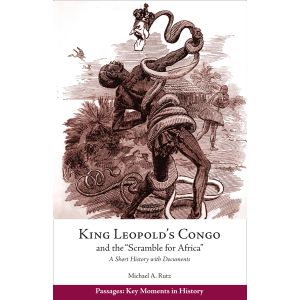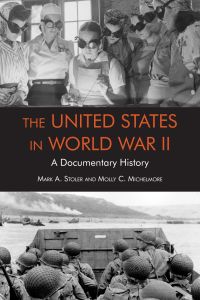The Cuban Missile Crisis and the Cold War
Series: Passages: Key Moments in History
"Getchell does an exemplary job of explaining the context, development, and results of the Cuban Missile Crisis. She has an expert grasp on the latest research in the field, and her prose is engaging, making this book a pleasure to read." —Renata Keller, author of Mexico's Cold War: Cuba, the United States, and the Legacy of the Mexican Revolution
In October 1962, when the Soviet Union deployed nuclear missiles in Cuba, the most dangerous confrontation of the Cold War ensued, bringing the world close to the brink of nuclear war. Over two tense weeks, U.S. president John F. Kennedy and Soviet premier Nikita Khrushchev managed to negotiate a peaceful resolution to what was nearly a global catastrophe. Drawing on the best recent scholarship and previously unexamined documents from the archives of the former Soviet Union, this introductory volume examines the motivations and calculations of the major participants in the conflict, sets the crisis in the context of the broader history of the global Cold War, and traces the effects of the crisis on subsequent international and regional geopolitical relations. Selections from twenty primary sources provide firsthand accounts of the frantic deliberations and realpolitik diplomacy between the U.S., the U.S.S.R., and Fidel Castro's Cuban regime; thirteen illustrations are also included.
An eBook edition is available for $15.50, click here for more information and purchasing options. Ebook examination copies are also available to qualified course instructors.
In October 1962, when the Soviet Union deployed nuclear missiles in Cuba, the most dangerous confrontation of the Cold War ensued, bringing the world close to the brink of nuclear war. Over two tense weeks, U.S. president John F. Kennedy and Soviet premier Nikita Khrushchev managed to negotiate a peaceful resolution to what was nearly a global catastrophe.
Drawing on the best recent scholarship and previously unexamined documents from the archives of the former Soviet Union, this introductory volume examines the motivations and calculations of the major participants in the conflict, sets the crisis in the context of the broader history of the global Cold War, and traces the effects of the crisis on subsequent international and regional geopolitical relations.
Selections from twenty primary sources provide firsthand accounts of the frantic deliberations and realpolitik diplomacy between the U.S., the U.S.S.R., and Fidel Castro's Cuban regime; thirteen illustrations are also included.
"Michelle Getchell's The Cuban Missile Crisis and the Cold War: A Short History with Documents is a concise introduction to the crisis. . . .
"The book is strongest in its treatment of the background of the crisis. Getchell begins with the origins of the Cold War, then progressively narrows the focus onto Latin America, the Cuban Revolution, and the events immediately preceding the crisis, allowing her to place the crisis within the context of the Cold War in the region. Her descriptions of the Cold War in Latin American and Cuban-Soviet relations are particularly useful and fill a gap in the literature for readable summaries on these topics. The author takes a fair-minded but critical view of U.S. policies toward Latin America, with a valuable exploration of the attitudes of the region’s governments and people and of the backlash to American intervention. Soviet-Cuban relations emerge as one of the major themes of the book and the area in which it contributes original research. Getchell uncovers records from the Soviet embassies in the United States and Mexico that highlight Cuba’s eagerness for relations with the Soviet Union early in the revolution and Soviet beliefs about American intentions toward Cuba. Her description of Fidel Castro’s substantial efforts to court the Soviet government and gain economic and military support is illuminating, and the discussion of Nikita Khrushchev’s reasons for moving Soviet missiles to Cuba is comprehensive. Many of the documents in the appendix also focus on Soviet-Cuban relations. She returns to these topics in discussing the aftermath of the crisis, again filling a gap in the literature for readable summaries on how the crisis influenced the subsequent course of the Cold War in the Western Hemisphere.
"As a narrative history and a source of assignable readings, this volume is very good. Getchell has a deep knowledge of the subject and draws on the best and latest scholarship to construct her narrative."
—Ron Gurantz, in H-War, H-Net Reviews
Introduction: The Making of a global Crisis
- The Origins of the Cold War
- A New Front in the Cold War
- The Cold War in Latin America
- The Cuban Revolution and the Soviet Union
- U.S. and Regional Responses to the Cuban Revolution
- Operation Zapata: The Bay of Pigs
- Operation Anadyr: Soviet Missiles in Cuba
- Crisis Dénouement: The Missiles of November
- Evaluating the Leadership on All Sides of the Crisis
- Nuclear Fallout: Consequences of the Missile Crisis
- The Future of Cuban-Soviet Relations
- Latin American Responses to the Missile Crisis
- Conclusion: Lessons of the Cuban Missile Crisis
- Historiography of the Cuban Missile Crisis
Documents
- Memorandum for McGeorge Bundy from Arthur Schlesinger, Jr., April 10, 1961
- State Department White Paper, April 1961
- From the Cable on the Conversation between Gromyko and Kennedy, October 18, 1962
- Telegram from Soviet Foreign Minister Gromyko to the CC CPSU, October 20, 1962
- President John F. Kennedy’s speech to the Nation, October 22, 1962
- Resolution Adopted by the Council of the Organization of American States Acting Provisionally as the Organ of Consultation, October 23, 1962
- Message from Mexican President Adolfo López Mateos to Cuban President Osvaldo Dorticós, October 23, 1962
- Letter from Khrushchev to John F. Kennedy, October 24, 1962
- Telegram from Soviet Ambassador to the USA Dobrynin to the USSR MFA, October 24, 1962
- Memorandum for President Kennedy from Douglas Dillon, October 26, 1962
- Telegram from Fidel Castro to N.S. Khrushchev, October 26, 1962
- Letter from Khrushchev to Fidel Castro, October 28, 1962
- Cable from USSR Ambassador to Cuba Alekseev to Soviet Ministry of Foreign Affairs, October 28, 1962
- Telegram from Soviet Deputy Foreign Minister Kuznetsov and Ambassador to the U.N. Zorin to USSR Foreign Ministry (1), October 30, 1962
- Premier Khrushchev’s Letter to Prime Minister Castro, October 30, 1962
- Prime Minister Castro’s Letter to Premier Khrushchev, October 31, 1962
- Meeting of the Secretary of the Communist Party of Cuba with Mikoyan in the Presidential Palace, November 4, 1962
- Brazilian Foreign Ministry Memorandum, “Question of Cuba,” November 20, 1968
- Letter from Khrushchev to Fidel Castro, January 31, 1963
- “I Know Something About the Caribbean Crisis,” Notes from a Conversation with Fidel Castro, November 5, 1987











